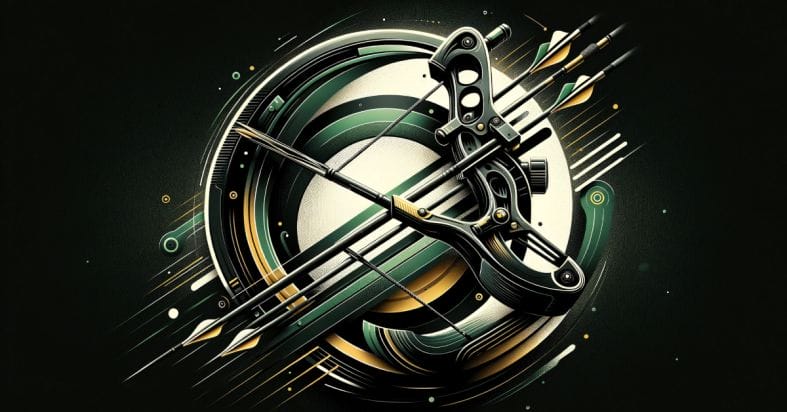Basic knowledge of setting up your longbow or recurve bow is vital for any archer looking to perform at their best. From choosing the right bow size to properly tuning the arrow rest and nocking point, these foundational steps can significantly impact your accuracy and comfort while shooting. In this guide, we will walk you through the vital components of setting up a longbow or recurve bow, ensuring you are ready to hit the target with precision and confidence.
Understanding the Longbow and Recurve Bow
Historical Overview and Differences
To understand the longbow and recurve bow, we must examine into their historical roots and key differences. The longbow, dating back to medieval times, is characterized by its simplicity and traditional design. Its long, straight limbs give it a classic appearance and require more strength to draw compared to the recurve bow. In contrast, the recurve bow features curved limbs that curve away from the archer when unstrung, enabling more power and speed in the arrow shot.
Key Components and Terminology
Terminology surrounding the longbow and recurve bow can sometimes be confusing for beginners. Key components of these bows include the riser, limbs, string, and arrow rest. The riser is the central part of the bow where the archer grips the bow, while the limbs extend from the riser and store the bow’s energy when drawn. The string is imperative for propelling the arrow forward, and the arrow rest supports the arrow before release.
Understanding these key components and their terminology is crucial for properly setting up and using a longbow or recurve bow for optimal performance and accuracy.
Initial Set-Up and Equipment Choice
Selecting the Right Bow
Some of the most critical decisions when setting up your longbow or recurve involve selecting the right bow for your needs. Consider factors such as draw weight, draw length, handedness, and intended use. It is vital to choose a bow that is comfortable to shoot and fits your shooting style to ensure optimal performance and enjoyment.
Essential Accessories and Tools
The initial set-up of your longbow or recurve also requires vital accessories and tools to enhance your shooting experience. Items such as an arrow rest, nocking points, string silencers, and bow stringer are vital for proper bow function and arrow release. Investing in quality accessories will improve your accuracy and consistency on the range or in the field.
Initial adjustments of these accessories and tools may be necessary to personalize your set-up according to your shooting preferences. Experiment with different configurations to find the optimal setup that works best for you. Proper maintenance and regular inspections of your equipment are also crucial to ensure safe and efficient shooting sessions.
Equipment choice plays a significant role in the performance and enjoyment of traditional archery. Take the time to research and test different bows, arrows, and accessories to find the perfect combination that suits your individual needs and preferences. Selecting high-quality equipment will not only enhance your shooting experience but also improve your accuracy and consistency on the range or in the field.
Assembling and Tuning Your Bow
Step-by-Step Assembly Guide
Guide
| Step 1: Unbox your bow, limbs, and string. | Step 2: Attach the limbs to the riser using the limb bolts. |
| Step 3: String the bow by sliding the loops of the string onto the limb tips. | Step 4: Adjust the brace height by twisting the string or using a brace height gauge. |
| Step 5: Install the arrow rest, nocking point, and sight according to the manufacturer’s instructions. | Step 6: Check for proper alignment and tighten all screws securely. |
Tuning for Accuracy and Performance
Tuning
In the matter of tuning your bow for accuracy and performance, consider adjusting the nocking point, brace height, and arrow rest position. Fine-tuning these elements will ensure that your arrow flies straight and true towards your target. Additionally, you may need to test different arrow spine weights and adjust your bow’s draw weight and tiller to achieve optimal performance.
Assembly
Proper assembly and tuning of your longbow or recurve are crucial for achieving optimal performance. Following the step-by-step assembly guide ensures that all components are correctly put together, while tuning for accuracy will guarantee that your bow shoots consistently and precisely. Take the time to assemble and tune your bow correctly to enjoy a rewarding archery experience.
Shooting Techniques and Maintenance
Basic Shooting Form and Practice Drills
To excel in archery, having a solid shooting form is crucial. To achieve this, ensure that your stance is stable, your shoulders are parallel to the target, and your grip on the bow is relaxed. Additionally, practice drills such as blank bale shooting and aiming at various distances can help improve your accuracy and consistency.
Caring for Your Longbow and Recurve Bow
On top of honing your shooting skills, it is crucial to properly maintain your longbow or recurve bow to ensure its longevity and performance. This involves regularly checking the condition of the bowstring, limbs, and bowstring serving. Cleaning the bow with a soft cloth and storing it in a cool, dry place can also prevent damage from moisture and dirt buildup.
Another important aspect of caring for your longbow and recurve bow is ensuring that the bow is properly strung and unstrung. Always use a bow stringer to avoid putting unnecessary stress on the limbs, which can lead to damage over time. Set a routine schedule for inspecting and maintaining your bow to keep it in optimal shooting condition.
Conclusion
The proper set-up of a basic longbow and recurve is crucial for maximizing performance and accuracy. By correctly tuning the bow, adjusting brace height, selecting the right arrows, and ensuring proper sighting, archers can optimize their shooting experience. It is important to follow manufacturer guidelines and seek guidance from experienced archers to fine-tune the set-up for individual preferences. Note, a well-tuned bow is key to achieving consistent and successful shooting results on the archery range or in the field.


